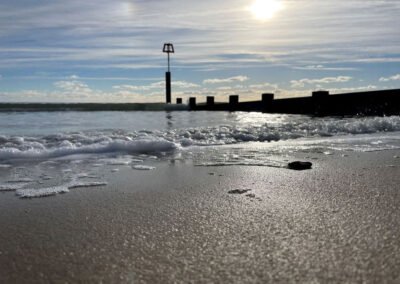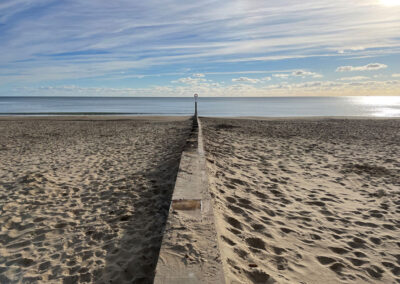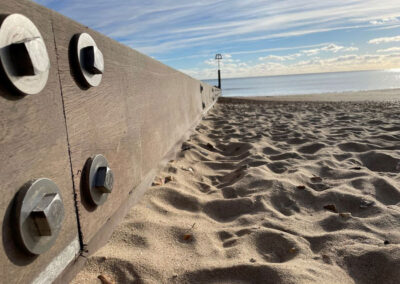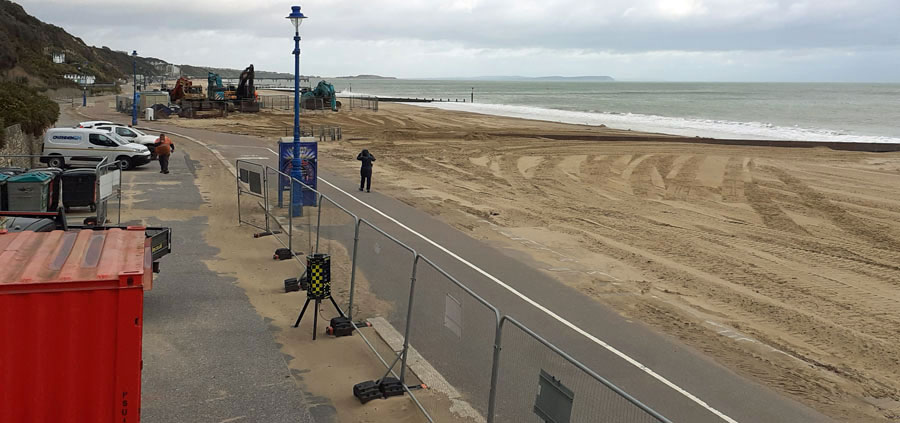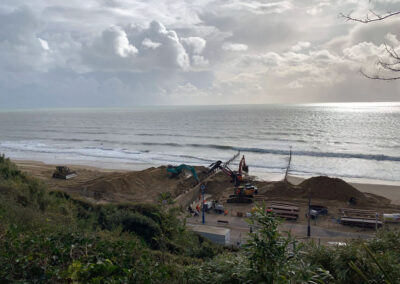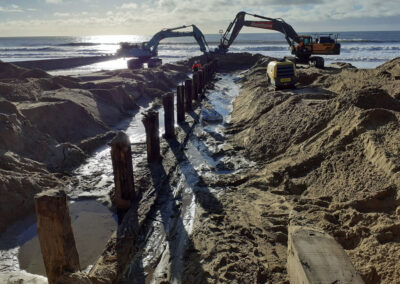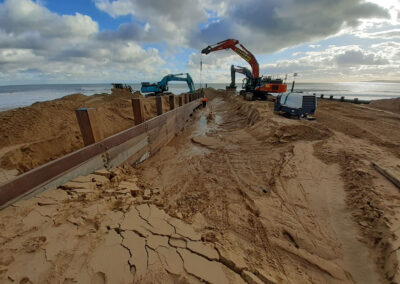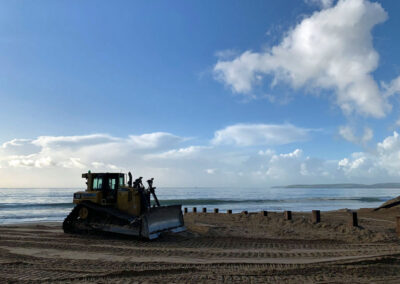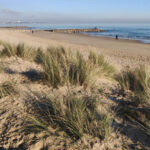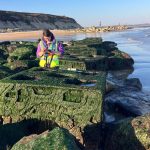Completed Project
Timber Groyne renewal programme, winter 2023/24
Video courtesy ITV Meridian, December 2020
Renewing three timber groynes on the beach, just below the East Cliff lift.
Lead Authority
BCP Council
Working with
Project start date
09 October 2023
Project Completed
16 January 2024
The Project
This winter we replaced three old groynes with three more evenly spaced ones along the beach below the East Cliff lift.
Our contractors Mackley Engineering, started on 09 October 2023 and were on site Monday to Saturday, primarily operating during normal working hours. Some duties were carried out during the lowest tides which fell outside of daylight hours. The project was completed on 16 January, two months ahead of the scheduled completion date of March 2024.
Project Updates
Project complete!
Ahead of schedule, thanks to effective working around weather and tides, the three timber groyne renewals at East Cliff Beach are now complete and the beach is fully re-opened.
Christmas 2023 & New Year
Works have now paused for the Christmas period. To enable visitors as much access to the sand as possible over the Christmas break, the beach has been re-opened and a smaller works compound created for the contractors machines. Please continue to follow on site safety signage.
Work on site will re-commence on 2 January 2024.
11 December – While machinery was on site, works were undertaken on the groyne immediately east of Bournemouth Pier; this area of the beach has now been re-opened.
From November Planking starts. Excavators remove the sand from around the piles to provide access. New planks are precisely fitted from top to bottom, to the first layer of hard substrate. Groynes can be up to 19 planks deep into the beach to help retain the sand.
Piling started on site from 23 October. The Movax piling rig creates the deep holes and the Auger (seemingly effortlessly) drives the piles into the beach. Standard piles are 10m long and the king piles at the outer seaward end are 12m long.
Works can be viewed from the prom or you can watch the previous year’s piling machines in action on our pop-up video.
Excavating sand away from the new groyne to continue planking
Excavating sand away from the new groyne to continue planking
Timber used for the new groynes
Each new groyne will be constructed using a mix of new tropical hardwood timber and recycled tropical hardwood planking, from previously deconstructed timber groynes, when available.
Hardwoods used will be Greenheart - a pale yellow to dark olive green wood from Guyana, South America, and Ekki - a dark red / deep chocolate-brown wood from West Africa and the Congo. These timbers have been selected for their strength, durability and resistance to marine life which can destroy wood by boring into and eating it.
What's eating our timber groynes?
Gribble! These tiny worms (Limnoria terebrans) were first discovered in 1799 and they attack marine timbers. Gribble burrow into groyne timbers, creating long tunnels just beneath the surface; the holes they leave behind eventually weaken the wood, causing it to crumble and rot. This is one of the reasons we renew our groynes every 25 years approx.
Gribble resemble tiny yellowy-pink lice about the size of a grain of rice, but they are actually very small crustaceans. Crustaceans are animals that usually have a hard covering, or exoskeleton, jointed legs and two pairs of antennas, or feelers. Other examples of crustaceans are crabs, lobsters, shrimps, and barnacles.
FUNKY FACTS ABOUT POOLE BAY GROYNES
A total of 29 piles are sunk for a timber groyne, each pile is 10m long and spaced 2.5m apart. The King pile (out at sea) is 12.5m long. Piles are driven down to the first solid layer of stable substrate/clay. Each groyne is between 5m-7.5m deep and roughly 75m in length. Approximately 225 planks of timber make up a groyne. Generally only the top 5 rows are constructed using new timber; recycled timber is used for the bottom 12-14 rows. Timbers unsuitable for re-use on new groynes are recycled for other projects; for example in 2022, for cladding and decking at the Environmental Hub at Durley Chine, and as part of a footbridge created at a flooded wetland scheme in the Tamar Valley AONB, Cornwall.
You'll find more information on projects that reuse BCP groyne timber at our Recycling & Reusing page.
Environmental considerations
All the groyne renewal works will be carried out in accordance with the Marine Management Organisation licence and planning consent. Additionally, new tropical hardwood timber used for this project is certified sustainable by the Forestry Stewardship Council (FSC).
The old groynes will be carefully deconstructed to ensure that all suitable materials can be recovered and recycled or re-used in future coastal projects.
Groynes - their role in coast protection
Beach material generally moves from west to east in Poole Bay. The strategically placed groynes are renewed approximately once every 25 years and slow down the natural processes. Piling and planking deep into the beach to the first solid layer of substrate/clay helps retain the sand within the groyne field.
In combination with periodic beach renourishment (topping-up the beach levels) the groynes also help protect the seawalls and cliffs from erosion. We last renourished some of the beaches from Poole to Southbourne in early 2021 [project details here].
Previous phases of timber groyne renewal:
- Winter 2022/23 – 4 groynes adjacent to Bournemouth Pier
- Winter 2021/22 – Year 2 of a two-year rewnewal programme, 4 groynes from Middle Chine to West Cliff zig-zag
- Winter 2020/21 – Year 1 of a two-year renewal programme, 4 groynes eastwards from Poole/Bournemouth boundary to Middle Chine
- Winter 2017/18 and 2018/19 – 12 groynes at Southbourne
- Winter 2016/17 – 8 groynes eastwards from Fisherman’s Walk to Gordon’s Corner
- Winter 2015/16 – 10 groynes from the east of Boscombe Pier to Fisherman’s Walk



